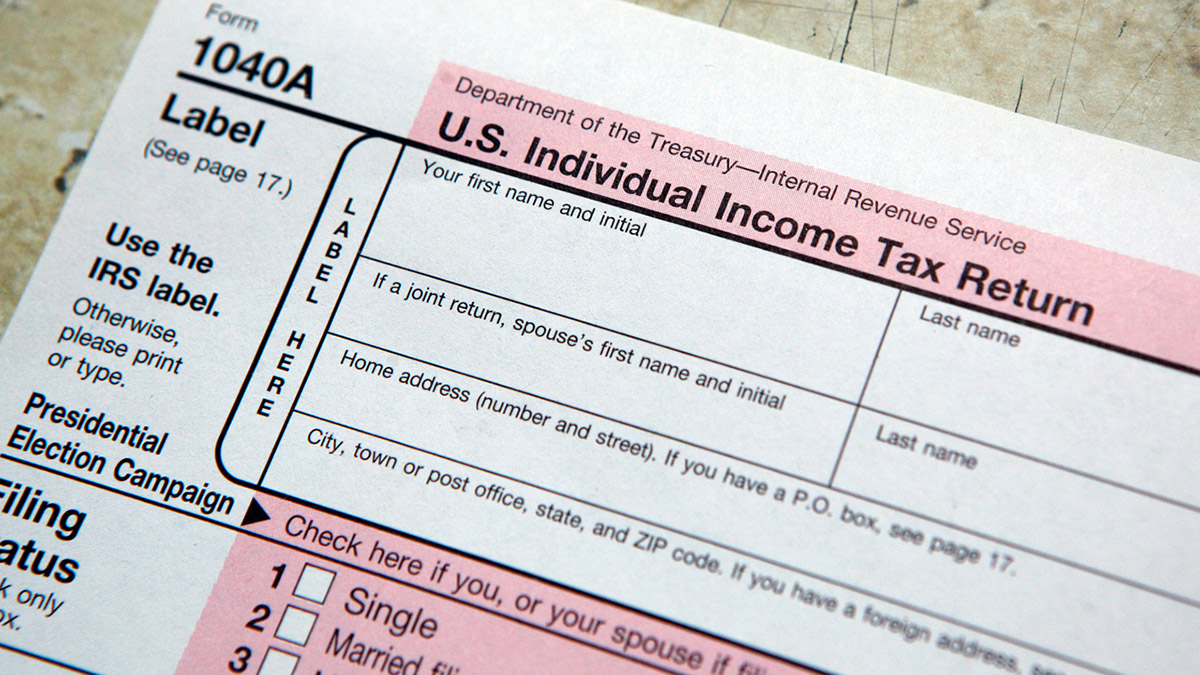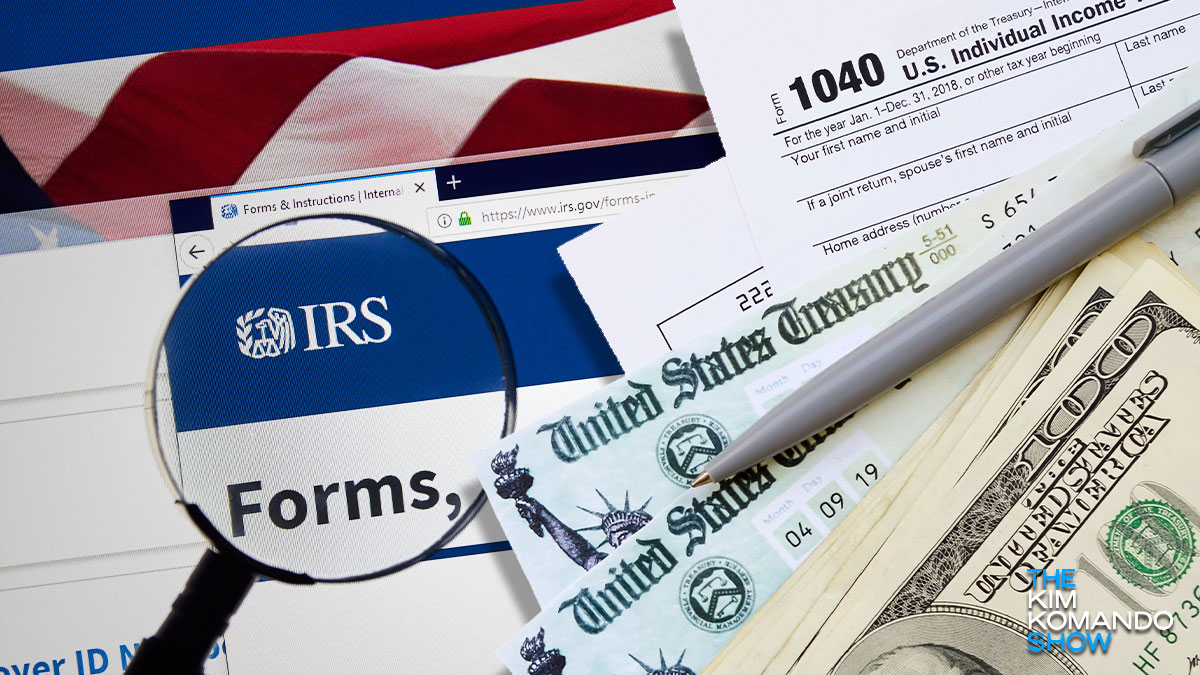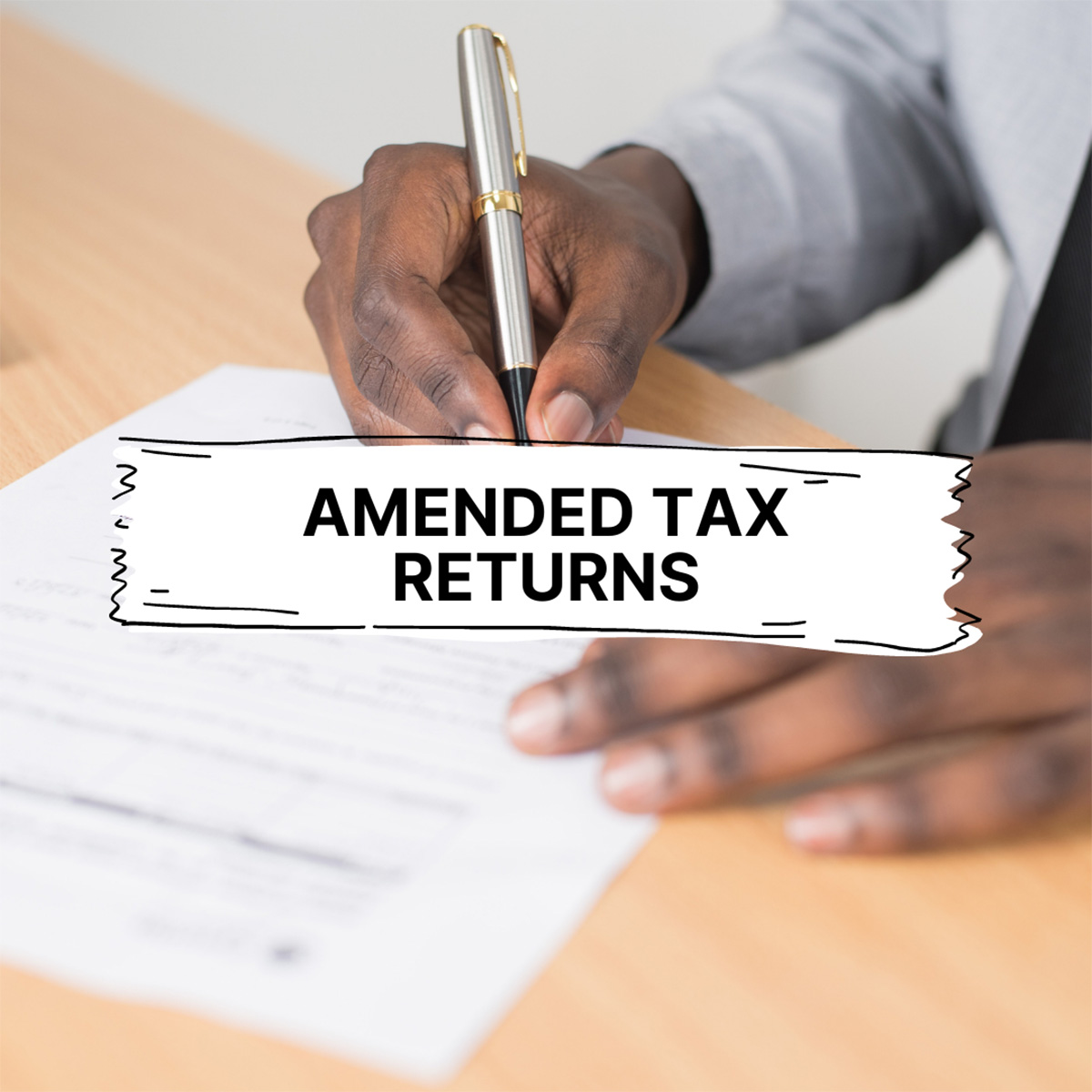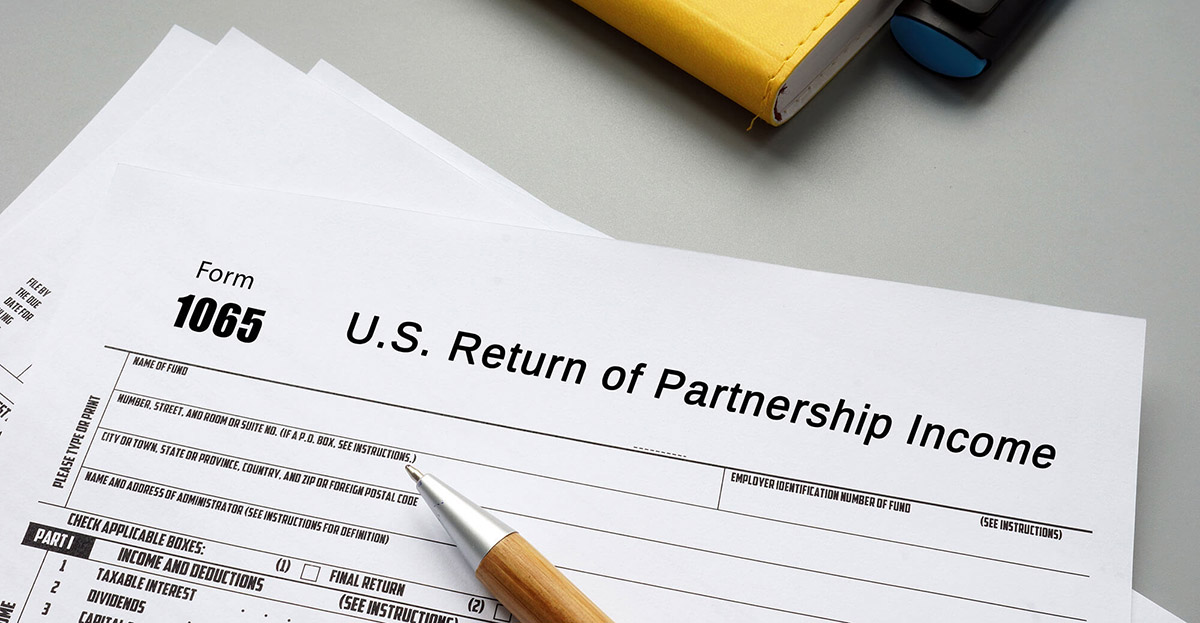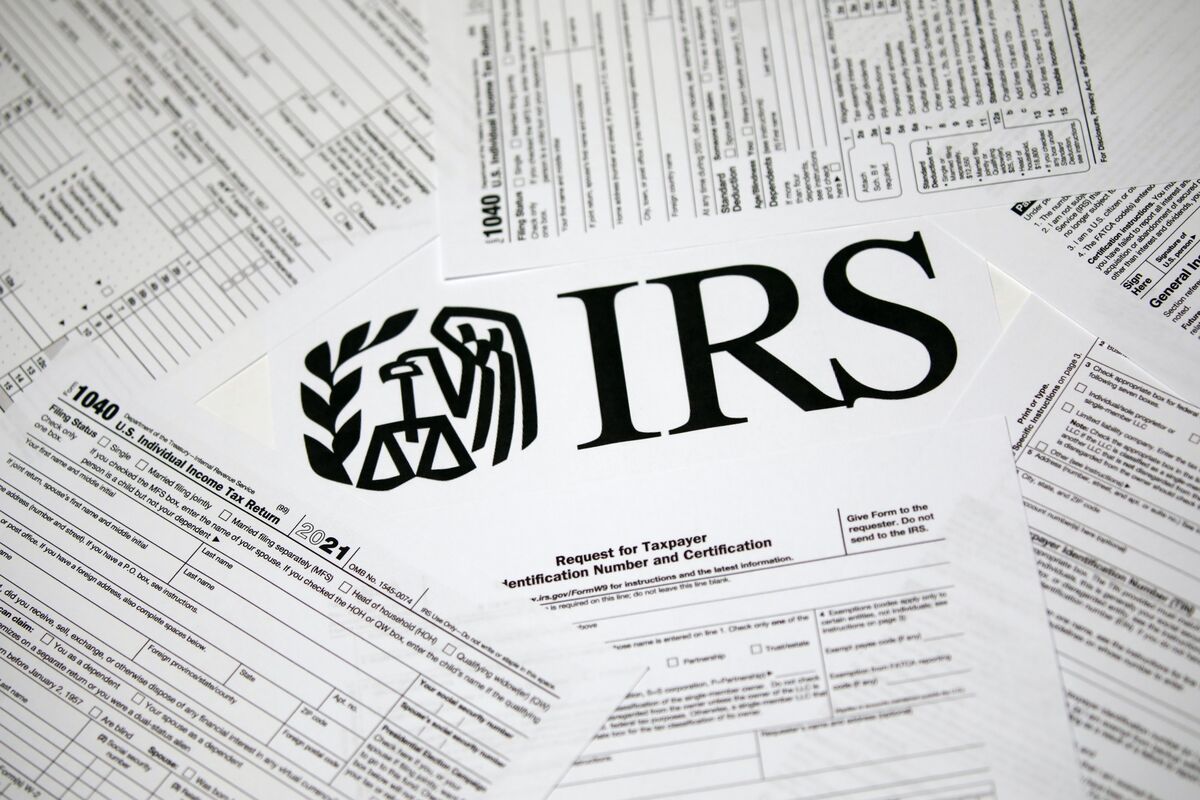

Finance
Which Routing Number For The Tax Return
Published: October 28, 2023
Find the right routing number for your tax return in the finance section. Avoid any delays by using the correct routing number.
(Many of the links in this article redirect to a specific reviewed product. Your purchase of these products through affiliate links helps to generate commission for LiveWell, at no extra cost. Learn more)
Table of Contents
- Introduction
- What is a Routing Number?
- Purpose of a Routing Number for Tax Returns
- Finding Your Routing Number
- Different Routing Numbers for Different Scenarios
- Understanding the ABA Routing Number
- Understanding the ACH Routing Number
- Common Errors and Issues with Routing Numbers for Tax Returns
- Tips for Ensuring Accuracy with Your Routing Number
- Conclusion
Introduction
Welcome to the world of tax returns, where precision and accuracy are paramount. When it comes to filing your taxes, one crucial piece of information you need is your routing number. But what exactly is a routing number, and why is it important for your tax return? In this article, we’ll explore the role of routing numbers in the tax filing process and guide you on how to find the correct routing number for your specific needs.
For those who are not familiar, a routing number is a unique nine-digit identifier assigned to financial institutions in the United States. Think of it as a digital address that helps facilitate the transfer of funds between banks. It plays a crucial role in various financial transactions, including direct deposits, wire transfers, and, most importantly for our purposes, tax refunds.
Now, you might be wondering why a routing number is necessary for your tax return. The answer lies in the way tax refunds are processed and delivered. When you file your tax return, the Internal Revenue Service (IRS) needs your banking information to deposit your refund directly into your account. This is not only convenient but also quicker than receiving a paper check in the mail. To ensure the money goes to the right place, you need to provide your correct routing number along with your account number.
But locating your routing number can be a bit confusing, considering the various financial institutions and circumstances involved. Not to worry though, as we’ll guide you through the process and help you understand the different types of routing numbers you might encounter.
So, whether you’re expecting a tax refund or need to pay your taxes electronically, understanding your routing number is crucial. In the next sections, we’ll delve into the different types of routing numbers, how to find them, and tips to ensure accuracy. Let’s dive in!
What is a Routing Number?
Before we delve into the specifics of routing numbers for tax returns, let’s first understand what a routing number actually is. A routing number, also known as an American Bankers Association (ABA) routing transit number or an Automated Clearing House (ACH) routing number, is a unique nine-digit code assigned to financial institutions in the United States.
The routing number serves as an identifier for banks, credit unions, and other financial institutions, allowing them to process various transactions seamlessly. It is similar to a postal address, helping to direct funds accurately and efficiently between different banks during electronic transfers.
The nine-digit routing number is divided into three segments. The first four digits represent the Federal Reserve routing symbol, which indicates the Federal Reserve Bank or the district where the financial institution is located. The next four digits identify the specific bank or credit union, while the final digit is a check digit embedded for verification purposes.
Routing numbers play a vital role in a wide range of financial transactions, including direct deposits, wire transfers, online payments, and, of course, tax returns. When you provide your routing number to the Internal Revenue Service (IRS) for your tax return, it ensures that your refund is deposited directly into your designated account.
It’s important to note that routing numbers are specific to each financial institution, meaning that they are not interchangeable. In other words, the routing number for Bank A will be different from the routing number for Bank B. This is why it’s crucial to have the correct routing number for your specific financial institution when filing your tax return.
Now that you have a basic understanding of what a routing number is, let’s explore its significance in the context of tax returns.
Purpose of a Routing Number for Tax Returns
The purpose of a routing number in the context of tax returns is to ensure the accurate and timely deposit of your tax refund into your bank account. When you file your tax return with the Internal Revenue Service (IRS), you have the option to choose direct deposit, which is the fastest and most convenient way to receive your refund. To facilitate this process, the IRS requires your routing number and account number.
By providing your routing number, you are designating the specific financial institution where your bank account is held. This allows the IRS to electronically transfer your tax refund from their accounts to yours. It eliminates the need for physical checks and reduces the potential for lost or stolen mail.
Using direct deposit also ensures that your refund arrives in your bank account without delay. Paper checks can take several weeks to arrive, whereas direct deposit typically results in faster access to your funds. This is especially beneficial for individuals who rely on their tax refund for essential expenses or financial commitments.
Moreover, utilizing direct deposit through a routing number enhances accuracy. It reduces the risk of errors that can occur when manually processing checks and minimizes the chances of incorrect mailing addresses or lost checks.
It’s worth noting that in some cases, individuals may need to provide their routing number for tax payments as well. For example, if you owe taxes and prefer to make an electronic payment directly from your bank account, you will need to provide your routing number along with your account number to ensure the transaction is processed correctly.
In summary, the purpose of a routing number for tax returns is to accurately and securely direct your tax refund into your bank account, providing faster access to your funds and minimizing the risk of errors or delays. Understanding the significance of your routing number and ensuring its accuracy is crucial when filing your tax return and choosing the direct deposit option.
Finding Your Routing Number
Now that you understand the importance of a routing number for your tax return, the next step is to find the correct routing number for your specific financial institution. Here are a few methods to help you locate this essential piece of information:
- Contact Your Bank: The most reliable and direct way to obtain your routing number is by contacting your bank directly. Reach out to their customer service department via phone, email, or in-person to request the routing number associated with your account. They will be able to provide you with the correct routing number for your specific branch.
- Check Your Bank’s Website: Many banks have their routing numbers listed on their websites, making it easily accessible for their customers. Visit your bank’s official website and navigate to the section that provides information about routing numbers. Look for a page titled “Routing Numbers” or “ABA Routing Numbers” for the relevant details.
- Check Your Bank Statements: If you have paper or electronic copies of your bank statements, you may find your routing number listed on them. Look for any references to “Routing Number,” “ABA Number,” or “Transit Number” on the statements. The routing number is usually located alongside your account number.
- Use Online Banking: If you have access to online banking, log in to your account and search for the routing number. Banks often display routing numbers in the account details section or provide a dedicated tab for routing number information. You may need to navigate through the website or consult the help/support section for guidance.
- Use a Routing Number Lookup Tool: If you are unable to find your routing number using the methods mentioned above, there are online routing number lookup tools available. These tools typically require you to enter your bank name, address, and sometimes your account number. They will then provide you with the correct routing number associated with your financial institution.
Remember, it’s essential to double-check the routing number you obtain to ensure accuracy. Even a small error in the routing number can cause delays or direct your refund to the wrong account. Take the time to verify the information and confirm that you have the correct routing number before filing your tax return.
Now that you know how to find your routing number, let’s explore the different types of routing numbers you might encounter when dealing with tax returns.
Different Routing Numbers for Different Scenarios
When dealing with routing numbers for tax returns, it’s important to understand that there are different types of routing numbers depending on the transaction and the financial institution involved. Let’s explore some common scenarios and the corresponding routing numbers that may be applicable:
- ABA Routing Number: The American Bankers Association (ABA) routing number is the most common type of routing number. It is used for paper transactions, such as checks, and is typically associated with brick-and-mortar banks. When providing your routing number for tax returns, it is likely the ABA routing number that you will need to provide.
- ACH Routing Number: The Automated Clearing House (ACH) routing number is used for electronic transactions, including direct deposits and online payments. It is associated with online banks and credit unions that primarily operate digitally. If you are filing your tax return electronically and opting for direct deposit, you may need to use the ACH routing number instead of the ABA routing number.
- Wire Transfer Routing Number: In certain cases, you may need to use a specific routing number for wire transfers. Wire transfers are typically used for large transactions and may involve additional fees. If you are making a tax payment or expecting a tax refund via wire transfer, you will need to obtain the appropriate routing number from your financial institution.
- International Routing Number: If you are a non-U.S. resident filing a tax return and expecting a refund, you may need to provide an international routing number. International routing numbers are specifically used for cross-border transactions and vary depending on the country and financial institution involved. It is important to consult with your bank or tax advisor to determine the correct routing number for international tax refunds.
As you can see, depending on the nature of your tax transaction and the type of financial institution you are dealing with, you may encounter different routing numbers. It is crucial to identify the correct routing number based on your specific scenario to ensure the smooth and accurate processing of your tax return.
Now that we have explored the different types of routing numbers, let’s take a closer look at the ABA routing number and the ACH routing number and understand their distinctions.
Understanding the ABA Routing Number
The ABA routing number, also known as the ABA transit number or the ABA RTN, is a nine-digit code used for paper transactions within the United States. It is assigned by the American Bankers Association and is primarily associated with traditional brick-and-mortar banks.
The ABA routing number serves as an identifier for the financial institution where the bank account is held. It helps facilitate various transactions, including check processing, direct deposit, and other paper-based transactions. When providing your routing number for tax returns, it is typically the ABA routing number that is required.
The routing number is divided into three parts. The first four digits represent the Federal Reserve routing symbol, indicating the Federal Reserve Bank or district where the financial institution is located. The next four digits identify the specific bank or credit union, while the final digit is a check digit used for verification purposes.
It’s important to note that the ABA routing number is specific to each financial institution. Even banks with multiple branches may have different routing numbers for each branch. Therefore, when filing your tax return, make sure to provide the routing number associated with the branch where your account is held.
You can typically find your ABA routing number by checking your bank statements, contacting your bank directly, or accessing your online banking account. Some banks also provide their ABA routing numbers on their websites. If you are unsure about your routing number, it is always best to consult with your bank’s customer service for accurate and up-to-date information.
Having the correct ABA routing number is crucial to ensure your tax refund is directed to the right account. It is important to double-check the routing number for accuracy before filing your tax return. A small error in the routing number can lead to delays or result in your refund being deposited into the wrong account.
Now that you understand the ABA routing number, let’s explore the ACH routing number and its significance in electronic transactions.
Understanding the ACH Routing Number
The ACH routing number, or Automated Clearing House routing number, is a nine-digit code used for electronic transactions within the United States. It is primarily associated with online banks and credit unions that operate digitally, although traditional brick-and-mortar banks may also have ACH routing numbers.
The ACH routing number functions similarly to the ABA routing number but is specifically used for electronic transactions such as direct deposits, online payments, and electronic transfers. When filing your tax return electronically and choosing direct deposit, you may need to provide your ACH routing number.
Like the ABA routing number, the ACH routing number is divided into three segments. The first four digits identify the Federal Reserve routing symbol, indicating the Federal Reserve Bank or district. The next four digits represent the financial institution, while the final digit is a check digit used for verification.
The ACH routing number differs from the ABA routing number primarily in the use of electronic transactions. While the ABA routing number is associated with paper transactions, such as checks, the ACH routing number is specifically designed for seamless electronic transfers.
When providing your ACH routing number for tax returns, it’s important to ensure you have the correct information. You can typically find your ACH routing number by checking your bank’s website, consulting your bank’s customer service, or accessing your online banking account. Some financial institutions may use the same routing number for both ABA and ACH transactions, while others may have separate routing numbers for each.
Make sure to double-check your ACH routing number for accuracy before filing your tax return. Errors in the routing number can cause delays or direct your refund to the wrong account. It’s always best to refer to the most up-to-date information provided by your bank or consult with your bank’s customer service if you have any doubts.
Understanding the ACH routing number ensures a smooth and accurate processing of your tax return when opting for direct deposit or other electronic transactions. Now that we have explored both the ABA and ACH routing numbers, let’s address some common errors and issues that you may encounter with routing numbers for tax returns.
Common Errors and Issues with Routing Numbers for Tax Returns
While routing numbers are crucial for ensuring the accurate and secure transfer of funds for your tax return, there are some common errors and issues that you should be aware of. Here are a few of the most frequent problems that individuals encounter with routing numbers:
- Using Incorrect Routing Numbers: One of the most common mistakes is using the wrong routing number. This can happen due to a typo, confusion between ABA and ACH routing numbers, or misunderstanding which routing number to use for your specific financial institution. Always double-check the routing number and verify it with your bank before submitting your tax return to avoid any delays or misdirected funds.
- Using Outdated Routing Numbers: Financial institutions occasionally update their routing numbers due to mergers, acquisitions, or system changes. Using an outdated routing number can result in rejected transfers or delayed refunds. Make sure to obtain the most up-to-date routing number from your bank directly or consult their website for any recent changes.
- Confusing Routing Number with Account Number: Another common error is mixing up the routing number with the account number. Remember that the routing number identifies the bank or credit union, while the account number identifies your specific bank account. Ensure you input both the routing number and the account number correctly when filing your tax return to avoid any complications.
- Using International Routing Numbers: If you are a non-U.S. resident filing a tax return, using an international routing number can lead to issues. International routing numbers are specific to cross-border transactions and may not be applicable for tax refunds within the United States. Consult with your bank or tax advisor to determine the correct routing number for international tax refunds.
- Misplacing Leading Zeros: Routing numbers can begin with one or more leading zeros. However, individuals sometimes mistakenly omit these zeros when entering the routing number. This omission can result in rejected transfers or incorrect routing information. Always include any leading zeros when inputting your routing number.
It’s essential to take the time to review and confirm your routing number before submitting your tax return. Double-check the accuracy of the number and ensure it is up-to-date to prevent any delays or complications in receiving your tax refund.
Now, let’s explore some helpful tips for ensuring accuracy when dealing with your routing number.
Tips for Ensuring Accuracy with Your Routing Number
When it comes to your routing number for tax returns, accuracy is paramount to ensure a smooth and error-free process. Here are some tips to help you ensure the accuracy of your routing number:
- Double-Check the Number: Before submitting your tax return, double-check the routing number you have entered. Make sure each digit is correct and that there are no typos or errors. Remember, even a single incorrect digit can result in delays or misdirected funds.
- Verify with Your Bank: If you are unsure about your routing number, reach out to your bank for verification. Contact their customer service or visit a branch to confirm that you have the correct routing number associated with your account. Banks can provide the most accurate and up-to-date information.
- Use Trusted Sources: When searching for your routing number online, make sure to use trusted sources such as your bank’s official website or reputable financial websites. Be cautious of potential scam sites that may provide incorrect routing numbers or attempt to gather your personal information.
- Keep Your Information Up-to-Date: Ensure that your bank has your current contact information, including your mailing address and email address. This helps prevent any communication issues and ensures that you receive any important updates or notifications regarding your routing number or account.
- Be Cautious with International Transactions: If you are filing a tax return as a non-U.S. resident and expecting an international tax refund, consult with your bank or tax advisor for the correct routing number. International transactions may have specific routing number requirements and using the wrong number can lead to complications.
- Review IRS Instructions and Guidelines: The IRS provides detailed instructions and guidelines for tax filers, including information on routing numbers. Take the time to review the official IRS instructions to ensure that you understand the requirements and processes related to your routing number and tax return filing.
By following these tips, you can ensure the accuracy of your routing number and minimize the risk of errors or delays in your tax return process. Taking a proactive approach and verifying your routing number will provide peace of mind and a smooth financial experience during tax season.
Now, let’s wrap up our discussion on routing numbers and tax returns.
Conclusion
Understanding and providing the correct routing number for your tax return is vital for a seamless and efficient filing process. The routing number serves as a unique identifier for your financial institution and ensures the accurate and secure transfer of funds, whether it’s a tax refund or tax payment.
Throughout this article, we have explored the importance of routing numbers, the different types of routing numbers, and common errors and issues that individuals may encounter. We have also provided helpful tips to ensure accuracy when dealing with routing numbers.
Remember, the routing number is specific to each financial institution and may vary depending on the type of transaction or the institution’s online or physical presence. It is essential to double-check your routing number, seek verification from your bank if needed, and use trusted sources when obtaining routing numbers.
To find your routing number, reach out to your bank directly, check your bank’s website or statements, or use online banking tools. Carefully input the routing number, ensuring that it is accurate and up-to-date to avoid any delays or complications during the tax filing process.
By following the provided tips and guidelines, you can ensure the accurate transfer of funds, expedite your tax refund, and have a hassle-free experience during tax season.
Remember, if you have any doubts or concerns regarding your routing number, it is always best to consult with your bank or a qualified tax professional who can provide you with personalized advice.
In conclusion, arming yourself with knowledge about routing numbers and understanding their significance in tax returns will help you navigate the process confidently and ensure that your funds are transferred correctly. Now, go forth and file your tax return with peace of mind!
